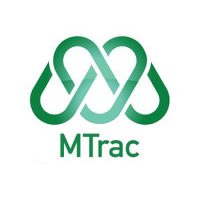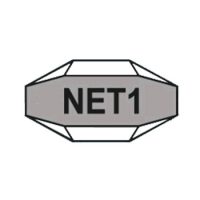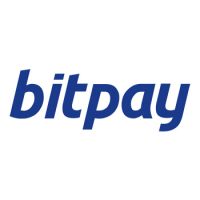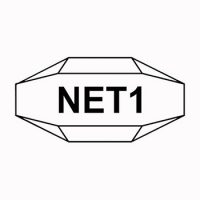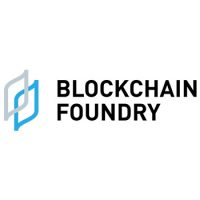Blockchain
Waves Breaks into dApps Market, Launching Smart Contracts Functionality

Waves Platform, a decentralised blockchain ecosystem for building Web 3.0 solutions, is releasing its purpose-designed programming language RIDE on mainnet – enabling global developers to create fully-fledged decentralised applications on the Waves blockchain.
Innovative solution
Waves claims that its solution has advantages over existing alternatives, including the most popular platforms: Ethereum, EOS and TRON. These advantages include the developer-friendly RIDE programming language, which helps users avoid mistakes in the coding process: lazy evaluation, formal verification, no gas requirements, flat fees for transactions and better scalability properties.
Alexander Ivanov, Waves founder and CEO, believes that the RIDE rFelease will attract a large number of developers to the platform, both from competing blockchains and from outside the blockchain space.
“DApps are considered to be the future of the decentralised world and a platform that stays ahead in this battle will rise at the top,” he comments. “We aspire to be at the top because we build original solutions that have never been released before, and take into account the problems of implementations that are already available in the market.”
“For blockchain developers, this means a cheaper and more convenient coding process than ever before, while those from outside the blockchain segment will see the entry threshold substantially lowered and new opportunities arrive,”he adds.
According to Waves, in recent weeks around 500 active users have tested RIDE and dApps on the network’s testnet, generating 40,000 to 50,000 transactions daily. Currently, the average daily load is around 90,000 transactions. Shortly after mainnet release, Waves expects a 30% to 50% increase in network load and a further increase in the longer term, as well as an increase in miners’ revenues.
Impact on the segment
Currently, the dApps segment is valued at $3.2 billion, with the total number of users on the top four platforms close to 800,000 – a 25% increase for the first quarter of 2019. Analysts predict a boom in the dApps segment over the next two to three years.
DApps have the potential to democratise not only storage, trading and betting, but also elections, legislation and other public services and events.
Those dApps will be written and launched on existing platforms, whose number runs into a few dozens. However, even the largest and best-known platforms are not yet fully in line with developers’ requirements.
The launch of Waves’ smart contracts is set to step up competition between platforms and foster the segment’s expansion.
Waves Platform was founded in 2016 with a team of 10 developers after raising $16 million in investment. The company has 180 employees in Moscow, Amsterdam and Zug currently. There are 664,074 active users (+30% year-on-year for 2019/2018) that provide 100,861 transactions on average daily (according to blocktivity.info). The total amount of transactions processed by mainnet is over 65 million.
Waves is the technological basis of the Vostok project, which attracted $120 million in investment in December 2018 to develop a private blockchain for the corporate and public sectors.
SOURCE Waves Platform
Blockchain
Halving weakness sees $206 million exit crypto funds, Bitcoin miners pivot to AI

Leading up to Friday’s Bitcoin (BTC) halving, investors opted to remain on the sidelines rather than increase their exposure to cryptocurrencies. CoinShares’ latest report on digital asset fund flows reveals that crypto funds experienced $206 million in outflows last week, while trading volumes for Exchange-Traded Products (ETPs) dropped to $18 billion.
James Butterfill, head of research at CoinShares, noted, “These volumes represent a lower percentage of total Bitcoin volumes (which continue to rise) at 28%, compared to 55% a month ago.” He attributed this decline in investor appetite to expectations that the Federal Reserve would maintain interest rates at elevated levels for a longer duration.
In terms of regional flows, the United States led the outflows with $244 million exiting incumbent ETFs by the week ending April 19. Butterfill highlighted that newly issued ETFs still received inflows, albeit at lower levels compared to previous weeks. Germany and Sweden saw outflows of $8.3 million and $6.7 million, respectively, while Canada experienced inflows of $29.9 million. Switzerland, Brazil, and Australia also witnessed inflows of $7.8 million, $5.5 million, and $2.2 million, respectively.
Butterfill observed that although Bitcoin saw outflows of $192 million, there were minimal flows into short-Bitcoin positions. Ethereum (ETH) experienced outflows of $34 million for the sixth consecutive week. However, multi-asset funds saw improved sentiment, attracting $8.6 million in inflows. Additionally, Litecoin (LTC) and Chainlink (LINK) received inflows of $3.2 million and $1.7 million, respectively.
The report highlighted that blockchain equities sustained their 11th consecutive week of outflows, totaling $9 million, as investors remained concerned about the halving’s impact on mining companies.
In a separate analysis of the post-halving crypto mining industry, CoinShares analysts suggested that many miners might transition to serving the artificial intelligence (AI) sector, which has become more lucrative. They anticipated a shift towards AI in energy-secure locations, potentially leading to Bitcoin mining operations relocating to stranded energy sites.
The analysts projected a 10% decline in the Bitcoin network’s hash rate after the halving as miners deactivate unprofitable ASICs. However, they expected the hash rate to reach 700 exahash (EH/s) by 2025. As of the current data, the Bitcoin hash rate stands at 596.22 EH/s.
The report also noted that substantial cost increases are anticipated due to the halving, with electricity and production costs nearly doubling. Mitigation strategies include optimizing energy costs, enhancing mining efficiency, and securing favorable hardware procurement terms. Miners are actively managing financial liabilities, with some utilizing excess cash to significantly reduce debt.
Source: kitco.com
The post Halving weakness sees $206 million exit crypto funds, Bitcoin miners pivot to AI appeared first on HIPTHER Alerts.
Blockchain
NYSE gauges interest in 24/7 stock trading like crypto

According to reports, the New York Stock Exchange (NYSE) is exploring the possibility of introducing round-the-clock trading, a model akin to that of cryptocurrency markets. In a bid to gauge market sentiment, NYSE’s data analytics team has circulated a survey among market participants. The survey seeks feedback on whether there is support for 24/7 or extended weekday trading hours and, if so, what measures should be implemented to safeguard traders against overnight price fluctuations. As of now, NYSE, alongside Nasdaq and the Chicago Board Options Exchange, operates from Monday to Friday, spanning from 9:30 am to 4:00 pm Eastern Time.
In the United States, assets like cryptocurrencies, United States Treasurys, foreign exchange, and major stock index futures are already tradable 24/7. Certain brokerages, such as Robinhood and Interactive Brokers, provide access to U.S. stocks throughout the week via a “dark pool” trading venue, catering to international retail investors during their local trading hours.
However, recent reports indicated that Robinhood suspended its 24-hour trading services amidst heightened tensions between Israel and Iran, prompting concerns among investors regarding the sustainability of continuous trading.
Effectively managing liquidity in a 24/7 trading environment has proven challenging for trading platforms within the cryptocurrency industry.
According to cryptocurrency research firm Kaiko, there’s often a mismatch between the operating hours of traditional financial institutions and the needs of major crypto traders and market makers. Traders frequently find themselves losing sleep during periods of extreme market volatility.
While the results of NYSE’s survey haven’t been revealed, Tom Hearden, a senior trader at Skylands Capital, conducted his own poll among his 19,300 followers, asking if they would support NYSE transitioning to 24/7 trading hours. Interestingly, over 70% of the 1,459 respondents voted “No.”
NYSE’s survey coincides with the efforts of startup firm 24X National Exchange, which is seeking approval from the Securities and Exchange Commission (SEC) to launch the first exchange in the country operating round-the-clock.
The FT said, citing two persons familiar with the subject, that the SEC has “months” to study the proposed rule change, and other relevant issues, such who should shoulder expenses and the function of clearing houses, are already being considered by other stakeholders.
“How loud they will be playing in the middle of the night is unknown to me. However, the decision of whether something is commercially feasible or not actually shouldn’t be made by the SEC, James Angel, a Georgetown University finance professor, told FT.
“I support letting the market make the decision. We’re all better off if it succeeds, and the exchange’s stockholders lose out if it fails.
After the company withdrew an application in March 2023, alleging operational and technological concerns, it is the second attempt to receive SEC clearance.
Source: cointelegraph.com
The post NYSE gauges interest in 24/7 stock trading like crypto appeared first on HIPTHER Alerts.
Blockchain
Online Banking Market to Grow at CAGR of 14.20% through 2033, Key Takeaways of Digital Banking, Banking Ecosystem, Financial Giants & Disruptive Startups
-

 Blockchain5 days ago
Blockchain5 days agoQuantum eMotion Files a Patent for Quantum-based Blockchain Wallet Under the Patent Cooperation Treaty (PCT)
-

 Blockchain Press Releases5 days ago
Blockchain Press Releases5 days agoCanaan Shines at Blockchain Life 2024 in Dubai
-

 Blockchain5 days ago
Blockchain5 days agoPhoenix Group Engages BHM Capital as Liquidity Provider to Boost ADX Liquidity and Enhance Market Dynamics
-

 Blockchain Press Releases6 days ago
Blockchain Press Releases6 days agoBybit Institutional Report 2024: Institutions Become Bullish and Eye Challenger Chains, while VC Funding Resurges for Infrastructure, Gaming, and AI
-

 Blockchain5 days ago
Blockchain5 days agoElizabeth Warren Urges Treasury Secretary Yellen to Implement Strong AML/CFT Measures for Stablecoins
-

 Blockchain Press Releases7 days ago
Blockchain Press Releases7 days agoBybit and Franck Muller Partner with Sidus Heroes to Launch Cosmic Gears: A Pioneering Web3 Game with a $250,000 Prize Pool and Exclusive Watch Collection
-

 Blockchain5 days ago
Blockchain5 days agoCrypto fans count down to bitcoin’s ‘halving’
-

 Blockchain5 days ago
Blockchain5 days agoTether USDT stablecoin goes live on TON blockchain




















